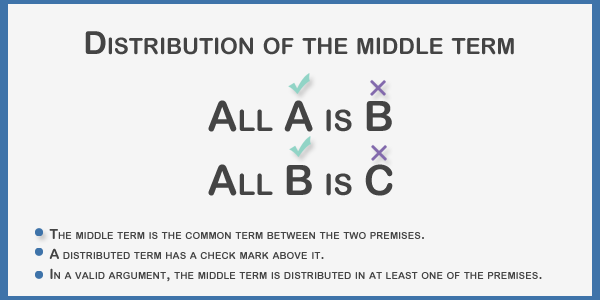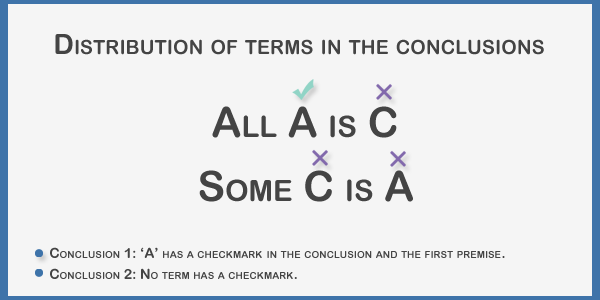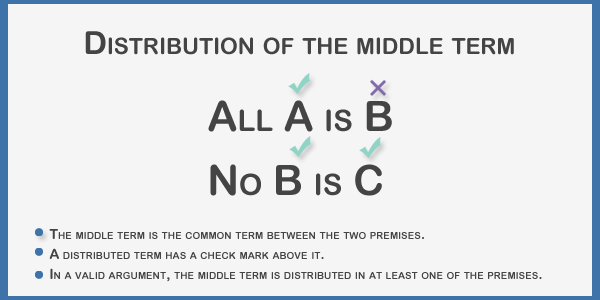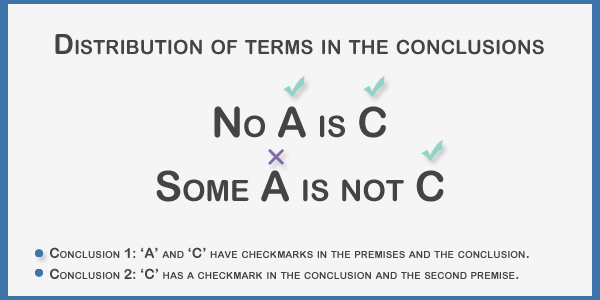Distributivity
The terms in statements will be distributed according to the following rules, and apply to both the premises and the conclusion:
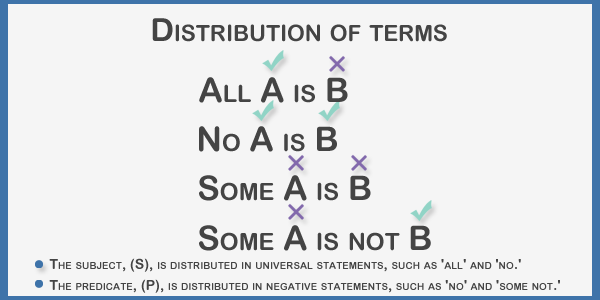
- The predicate, (P), is distributed in negative statements, such as 'No' and 'Some not'.
- The subject, (S), is distributed in universal statements, such as 'All' and 'No'.
